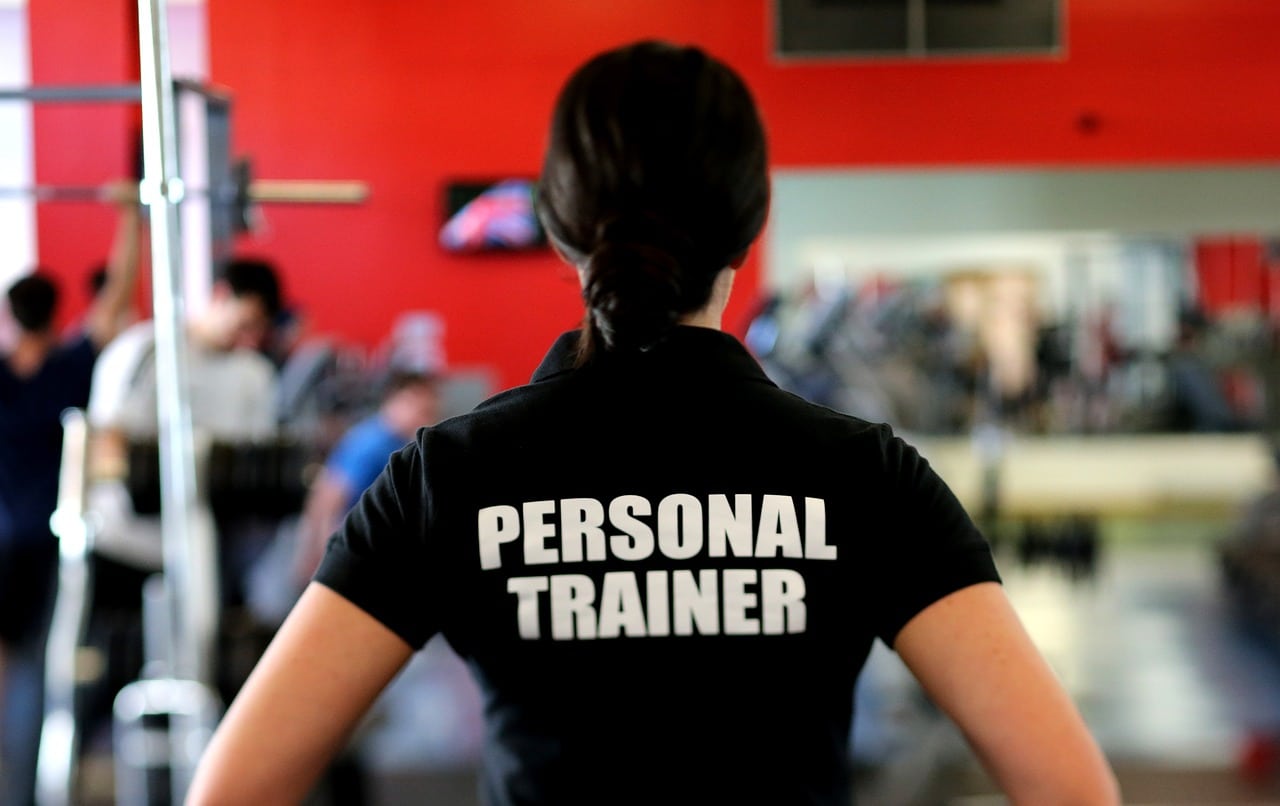Does your client lead a sedentary lifestyle?
At first thought, you might have gone, “Impossible!” Your client strength trains four times a week and slots in cardio sessions whenever they can.
That can hardly be called sedentary … right? Unfortunately, no. And it’s all got to do with the amount of time your client spends being non-active throughout the day (e.g., sitting when working, watching TV, and browsing social media).
More specifically, emerging research suggests that a variety of serious health issues—including metabolic syndrome, poor blood sugar management, and type 2 diabetes—are all related to large amounts of seated time, independent of how much someone exercises.
Keyword: “independent.” Meaning? Simply put, your client’s thirty- or sixty-minute workouts can’t counteract the adverse cardiometabolic health effects caused by prolonged, unbroken periods of sedentary activities.
So, one thing’s clear. It’s beneficial for your client to increase their daily non-exercise activity thermogenesis (NEAT) levels for its health benefits. Find out how you can help your client do that in this article.
What Is NEAT?
As implied by its name, non-exercise activity thermogenesis (NEAT) refers to any activity your client does throughout the day outside of formal exercise and sleeping. That includes carrying the groceries home, walking the dog, climbing the stairs, etc.
It’s one of the four components that make up your client’s total daily energy expenditure (TDEE); here’s a brief explanation of each of them:
- Basal metabolic rate (BMR): This refers to the minimum amount of energy your client’s body requires at rest to maintain homeostasis. The BMR represents approximately 70% of your client’s TDEE (i.e., if your client’s TDEE is 2,000, their BMR would come up to 1,400).
- Thermic effect of food (TEF): This refers to the amount of energy your client spends eating, digesting, and metabolizing food. In the average person, this accounts for about 10% of their TDEE.
- Non-exercise activity thermogenesis (NEAT): As explained earlier, NEAT refers to the energy your client burns through non-sports activities. NEAT can account for anywhere between 10% to 20% of your client’s TDEE.
- Exercise activity thermogenesis (EAT): This refers to the number of calories your client burns when they’re purposefully trying to break a sweat (e.g., during their sessions with you). EAT typically accounts for 5% to 10% of your client’s metabolism.

Get Your Free Guide
Learn How to Start a Fulfilling, Impactful Career as a Holistic Health Coach
You’ll learn:
- Why holistic health matters
- If holistic health coaching is right for you
- What career opportunities exist for health coaches
- And more!
Benefits of Increasing Your Client’s NEAT Levels
Of course, as mentioned, the primary benefit of helping your client increase their NEAT levels is combatting the ill effects of a sedentary lifestyle.
Higher levels of NEAT mean less risk of metabolic syndrome, cardiovascular events, and death from all causes.
What’s more, since research shows that inactivity can negate all the hard work your client puts into intentional exercise, increasing their NEAT levels would, in turn, help them reap the intended benefits of their workouts.
Another more commonly recognized benefit of increasing your client’s NEAT levels?
It can make it easier for them to achieve—and stay within—a calorie deficit (relevant to those who’re looking to lose weight). How so? Well, consider this.
Based on data measuring the energy expenditure of different lifestyles and activity patterns, an individual who works in an agricultural field could (theoretically) burn an extra 2,000 calories daily through NEAT-related activities compared to another—with the same height and body composition—who works in a chair-bound job.
Read that again: 2,000 calories!
The takeaway here is that the more calories your client burns through NEAT, the less you’ll have to rely on either cutting down their food intake or tweaking their exercise program (or a combination of both) to help them achieve a calorie deficit.
How to Increase Your Client’s NEAT Levels
A quick disclaimer before we begin: Not every client will need to increase their NEAT levels.
For instance, say your client works a highly active job (e.g., waitressing) and is on their feet for up to eight hours a day. Is there a need for you to get them to move around more? The answer is no.
So, before implementing any of the recommendations for a client, determine if they even need to increase their NEAT levels in the first place by looking at their:
- Occupation: Does your client spend the majority of their day on their feet at their job? This will help you ascertain if you should increase their NEAT levels.
- Current NEAT levels: Certain clients make it a point to keep their NEAT levels high despite working a sedentary job by taking frequent “movement breaks.” So, run through each client’s daily schedule in detail—and see if there’s any real need to increase their NEAT levels.
Let’s say you’ve determined that your client is indeed leading a sedentary lifestyle outside of their workout sessions. What next? Don’t fret; here are five things you could have them start doing to increase their daily NEAT levels.
Ask Your Client to Fidget More at Their Desk
Fidget more? That’s right.
According to a 2000 study published in The American Journal of Clinical Nutrition, your client can burn up to 120 calories an hour by simply sitting and “fidgeting” (e.g., toe-tapping, stretching their legs and arms, or flipping through papers)—compared to the 80 calories an hour if they were to sit motionlessly.
Don’t be so quick to dismiss the additional 40 calories as “meager,” by the way! It all adds up: Seven hours of sitting and fidgeting over a workday tallies up to an additional 280 calories.
Of course, it’s even better if you could get your client to fidget while standing.
This burns 150 calories an hour, which would, in turn, come up to an additional 490 calories daily compared to sitting motionless (math: 7 x 70 calories).
Get Them to Prepare Their Own Meals
Getting your client to meal-prep increases their NEAT levels in two ways. The first is that they’ll spend time commuting to the grocery store—and then walking down the aisles, shopping for necessary ingredients.
For reference: Walking at 2 MPH can help them burn up to 240 calories an hour.
The second way meal-prepping increases your client’s activity level is that the process “forces” them to cook, which involves chopping up ingredients, stir-frying, and a whole lot of other “fidgeting-like” movements.
Compare that to if your client were to get their meals delivered right to their doorstep. Chances are, they’d likely sit around—chilling on the sofa—and wait for their food to arrive.
Another “hidden” benefit of having your client prepare their own meals is that it discourages the over-consumption of ultra-processed foods by giving them more control over their dietary intake.
They’d have a better understanding of just what they’re putting into their bodies (i.e., number of calories and macronutrient split) and start to see the link between specific dietary tweaks, changes in their body composition, and how they feel during training.
Help Your Client Set a Daily Step Goal
One of the easiest ways to increase your client’s NEAT levels is to have them aim for anywhere between 10,000 to 12,000 steps a day. This way, they enjoy the flexibility of choosing the movement they prefer the most.
Examples of creative ways your client could make use of to get those extra steps in:
- Treadmill desk: If it’s at all possible, get your client to try out a treadmill desk; this allows your client to walk and burn calories while working. They’ll be hitting their daily step goal in no time. Talk about multitasking.
- Taking the stairs: Have your client take the stairs instead of the elevator or lift whenever possible. If your client has bad knees, have them only take the stairs up—but use the lift on their way down.
- Pacing around while on a call: Ask your client to pace on calls where they don’t have to switch on their laptop’s video cameras.
- Tidying up the house: Between picking up clutter, dusting, vacuuming, and mopping, your clients would have gotten nearly all the steps they require for the day. Bonus? They’ll end up with a sparkling clean house.
Prioritize Strength Training over Cardio
Is your client struggling to increase their NEAT levels despite their best efforts?
They may be doing too much cardio. But, wait—what’s that got to do with anything? Well, as it turns out, research shows that it’s common for individuals to move a lot less after a cardio workout.
More specifically, multiple studies have shown that people tend to compensate with a reduction in activity post-workout (i.e., lie around after exercising), sometimes so much so that they’d have burned more calories through their typical, daily NEAT levels than their cardio session.
If your client is indeed doing too much cardio (e.g., more than four times a week), the first thing you want to do is reduce that frequency.
This will naturally help increase your client’s NEAT levels.
And to further increase their daily NEAT levels, you could consider swapping their cardio sessions for strength-training ones.
That’s because, in contrast to cardio workouts, resistance training appears to increase an individual’s NEAT levels for the rest of the day.
Bottom line? You want to prioritize strength training—making sure to keep your client progressing over sessions—and spend less time focusing on your client’s cardio sessions.
Of course, that doesn’t mean eliminating cardio. You should still get your client to meet the recommended amounts of 150 minutes of moderate aerobic activity or 75 minutes of vigorous aerobic activity weekly.
Bottom line? You want to prioritize strength training,
Give Your Client a (Planned) Break from Their Diet
This pointer is particularly relevant for clients eating in a calorie deficit.
That’s because low calories will, inevitably, lead to decreased energy and increased lethargy—in turn, translating into massive reductions in the number of calories expended through NEAT.
Worse still, the number of calories your client burns through NEAT continues to decrease throughout their diet’s duration.
In other words: The longer they’re in a calorie deficit, the fewer and fewer calories they’ll burn, with it potentially reaching a point where they’re burning so little calories that they’re no longer in a deficit.
Ready for some good news?
It appears that you can help counteract your client’s decrease in NEAT levels by implementing something known as a “diet break.”
To implement this strategy, you increase your client’s calorie intake back up to maintenance levels for a week (or two) after every 4-8 weeks or so of dieting. Doing so appears to reverse many of the “energy-conserving” physiological adaptations their body has made in response to calorie restriction—including the reduction in NEAT levels.
Note that doing so will extend the length of your client’s diet. For example, they may take sixteen weeks to reach their goal weight instead of the targeted twelve weeks (where they’re in a continuous deficit).
Unless your client is rushing for a specific deadline (e.g., wedding or photoshoot), though, this wouldn’t necessarily be a major “downside.”
Takeaway
While increasing NEAT is a great way to combat a sedentary lifestyle, don’t let your client fall into the trap of thinking it’s a replacement for exercising. Rather, it’s a change to their lifestyles that could potentially improve their health—and complement the great work they’re already doing with training. That’s a key message to get across to your clients.

Get Your Free Guide
Learn How to Start a Fulfilling, Impactful Career as a Holistic Health Coach
You’ll learn:
- Why holistic health matters
- If holistic health coaching is right for you
- What career opportunities exist for health coaches
- And more!
References
- https://www.ncbi.nlm.nih.gov/pmc/articles/PMC3404815/
- https://journals.lww.com/acsm-essr/Fulltext/2010/07000/Too_Much_Sitting__The_Population_Health_Science_of.3.aspx
- https://www.ncbi.nlm.nih.gov/pmc/articles/PMC6058072/
- https://jissn.biomedcentral.com/articles/10.1186/1550-2783-11-7
- https://journals.physiology.org/doi/full/10.1152/japplphysiol.00968.2018
- https://pubmed.ncbi.nlm.nih.gov/8641250/
- https://pubmed.ncbi.nlm.nih.gov/11101470/
- https://pubmed.ncbi.nlm.nih.gov/17413092/
- https://pubmed.ncbi.nlm.nih.gov/21993080/
- https://journals.physiology.org/doi/full/10.1152/ajpregu.00141.2012?url_ver=Z39.88-2003&rfr_id=ori%3Arid%3Acrossref.org&rfr_dat=cr_pub%3Dpubmed&
- https://www.ncbi.nlm.nih.gov/pmc/articles/PMC4688292/
- https://pubmed.ncbi.nlm.nih.gov/18198305/
- https://pubmed.ncbi.nlm.nih.gov/9880251/
- https://pubmed.ncbi.nlm.nih.gov/28925405/



